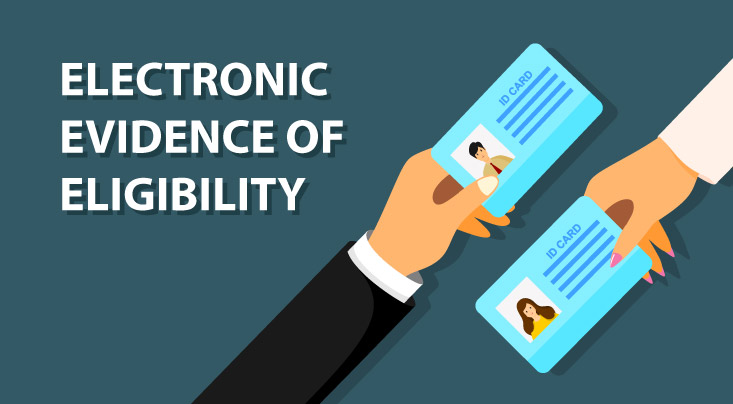
2024 Changes to Skills First
Taking into account RTO’s need for certainty, the Department has offered a Skills First contract of 2-years duration. The longer-duration

Pro-technology Training Providers with a passion for paperless operations should be excited after the latest Skills First Contract Updates. Last month, the Department released several fact sheets, including guidelines and instructions related to online solutions such as the use of electronic signatures, online training delivery and sighting/retaining evidence of eligibility through the use of the Document Verification Service. RTO Logic has already summarised the Electronic Signature Fact Sheet in a previous article; in this article, we are going to break down the fact sheet about Sighting and Retaining Evidence of Eligibility and provide further advice on sighting and retaining copies of identification documents.
As per the Skills First Contract and the 2020 Guidelines about Determining Student Eligibility and Supporting Evidence, RTOs must sight and retain copies of identification documents for eligible individuals, on three different occasions:
There is a list of identification documents which are accepted by the Department as evidence of citizenship or permanent residence. These documents are listed on the top of page one of the Evidence of Eligibility and Student Declaration Form and should not be confused with the ones listed on the bottom of the same page which do not prove citizenship or permanent residence. Training Providers must sight only one of these documents and retain evidence of sighting as well. If you have sighted and retained this evidence once, you can use it again in case of a subsequent enrolment, provided that the information is still current and valid. Obviously, a separate eligibility assessment must be conducted as part of every enrolment.
Training providers can either sight original documents in person or certified copies of them. The student can either show you the certified copy in person or post it to you. In both scenarios, you can either retain photocopies or electronic copies (e.g. scan). The fact sheet released by the Department has also made clear that a letter from a government agency (e.g. Centrelink) saying that an application for a document (e.g. Green Medicare Card) has been approved but the student hasn’t received the document yet, is not a sufficient document to validate proof of citizenship or permanent residency.
Certified copies of original documents can be used to determine an individual’s eligibility for subsidised training but not for the purpose of checking eligibility for concession. When sighting hardcopy evidence of concession, you must sight the original document and retain a photocopy or electronic copy, clearly indicating the date upon which it was sighted.
Although the format of the Evidence of Eligibility and Student Declaration Form has changed since last year, the only major change in terms of context, is the inclusion of the additional requirement of sighting and retaining a copy of an individual’s overseas passport or IMMI card when sighting formal confirmation of permanent residency granted by the Department of Home Affairs, such as a Visa Grant Notice Letter or VEVO Details Check.
In an effort to avoid confusion amongst providers and to apply consistency in practice, the Department has included the “Not Applicable” option against four different questions/declarations of the form, either in the format of plain text or a checkbox:
If any of the above sections of the form do not require an answer, RTO delegates must ensure that the “N/A” option is either ticked or written down as per the instructions printed on the form.
The Department does not currently allow sighting of digital identification documents (e.g. Medicare Card) through a mobile application as an option for evidencing eligibility for subsidised training. Electronic copies of originals or certified copies cannot be sighted either. When sighting identification documents as evidence of citizenship or permanent residency, the options are either to sight the physical copy or use the Commonwealth’s Government Document Verification Service to verify the document electronically.
However, RTOs are allowed to verify an individual’s eligibility for concession by sighting digital concession cards presented through the Centrelink Express Plus mobile application. In this case, providers must declare in writing that the digital concession card has been sighted and attach this declaration to the student’s file. Photographs or other reproductions of digital concession cards are not considered sufficient evidence and shouldn’t be retained.
The only scenario where an individual’s age is relevant to their eligibility is when the individual is under 20 years of age as at 1st January in the year of commencement of training and wishes to enrol into a government funded course, other than Foundation Skills, Apprenticeship and VCE/VCAL, that is equal to or a lower qualification level than the highest qualification held at the time of the expected commencement. In such a case the upskilling rule can be ignored as long as the Training Provider sights and retains proof of age for the eligible individual.
This evidence can be the same form of identification document that the Training Provider has used to determine whether the individual fulfils the citizenship/residence requirements (e.g. Australian or New Zealand Passport or Australian Birth Certificate). If the identification document used for this purpose doesn’t include a date of birth (e.g. Green Medicare Card) or the date of birth hasn’t been verified through use of the Document Verification Service, then the Training Provider must sight and retain an additional form of identification document as per the instructions of the Evidence of Eligibility and Student Declaration Form.
Visa Entitlement Verification Online (VEVO) is the Department of Home Affairs online service which allows individuals and organisations to check visa conditions. Training providers can use VEVO to determine an individual’s eligibility by checking whether they hold a permanent resident visa or not. Australian permanent residents can prove their eligibility by providing RTOs with a VEVO generated document, if they have verified their entitlements through their own VEVO account. In both scenarios, the VEVO summary extract should display the formal logo of the Department of Home Affairs and the permanent resident visa subclass held by the student.
Learn Local RTOs and TAFEs can use VEVO to verify individuals’ eligibility for the Asylum Seeker VET Program. They need to use the individual’s IMMI card to conduct a check against their study entitlements. The document extracted from VEVO will display information in relation to the individual’s visa subclass (eligible Asylum Seekers must hold BVE or TPV or SHEV) and their study rights. A separate check against their work entitlements must be conducted, if the individual wishes to enrol in an Apprenticeship/Traineeship or in a qualification with work placement requirements.
RTOs using this service for determining Skills First eligibility, must be aware of the fact that VEVO-generated documents are date and time stamped. Auditors will be able to tell when you conducted the check, therefore you must action this check prior to course commencement, as per the Skills First contract relevant requirements.
The Commonwealth Government’s Document Verification Service (DVS) is a national online system that allows organisations to compare an individual’s identifying information with a government record. RTOs can use this to check both Skills First eligibility and eligibility for concession. Prior to becoming a DVS business user, your organisation must engage with a fully operational Gateway Service Provider. The Gateway Service Provider will provide you with an online administrative platform to manage the process of checking and verifying students details against identification documents. There is a cost involved in using this service, as Gateway Service Providers are charged by the Government on annual transaction volumes.
When using the DVS, you don’t have to sight original documents and retain any copies in hardcopy or electronic format. Hardcopy evidence is not required to be kept nor are printouts from your online administrative platform. An online transaction record, confirming that the student details have been verified, can be retained within the platform and presented to auditors in electronic format. Don’t forget to also tick the relevant checkboxes in the Evidence of Eligibility and Student Declaration Form.
The Department’s effort to promote the use of web-based and paperless operational tools, such as the Document Verification Service, marks great progress in the battle of reducing the astounding amount of administrative work involved with the enrolment process. Although the Department encourages the use of the DVS as a secure way to check eligibility for Skills First-subsidised training, Training Providers should take into account a range of factors before purchasing and implementing this service. Student cohorts with adequate digital literacy and a well-established online enrolment process, where access to DVS can be integrated to, are important prerequisites for its efficiency.

Taking into account RTO’s need for certainty, the Department has offered a Skills First contract of 2-years duration. The longer-duration

Managing the transition from superseded training products can be a complicated and time-consuming process for RTOs. From time to time,

According to the Audit and Assurance Findings Report by the Department of Education, Evidence of Participation (EOP) made the top 5 most common issues identified at audit. Make sure you’re on top of your EOP obligations!

The 2023 Victorian VET Funding Contract came with significant changes to the eligibility settings. In this article, we cover the 2023 changes relating to the Skills First eligibility requirements and evidence retention.

In an effort “to increase the ability of Victorians to reskill and to continue to participate in an evolving economy”,

Not all Skills First funded training conducted in the workplace translates into an apprenticeship/traineeship enrolment. It is common for Training

